
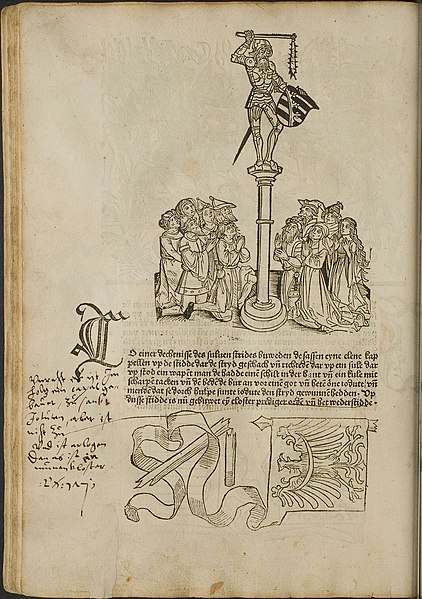


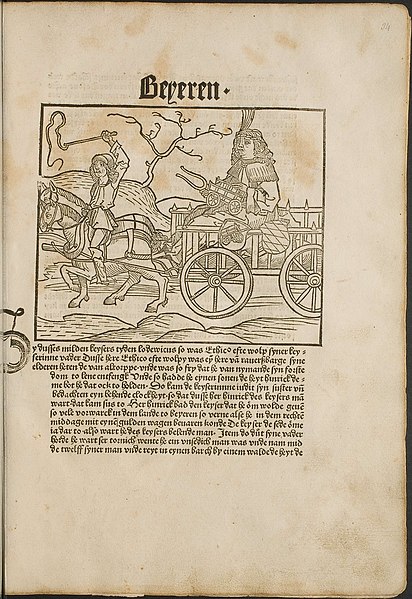
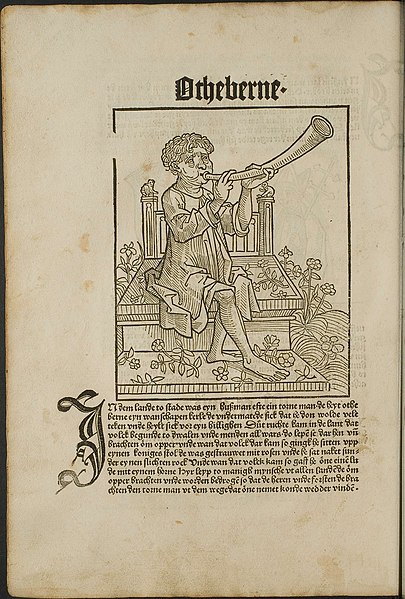




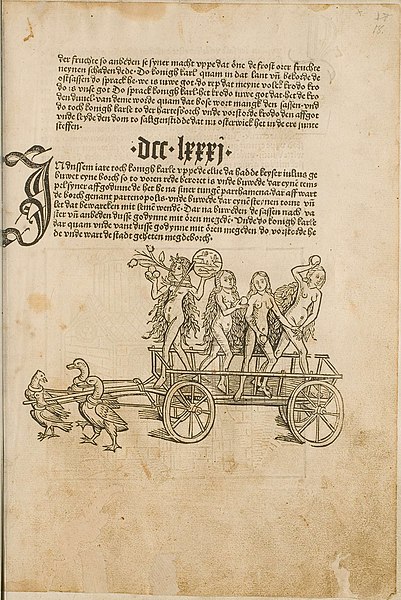


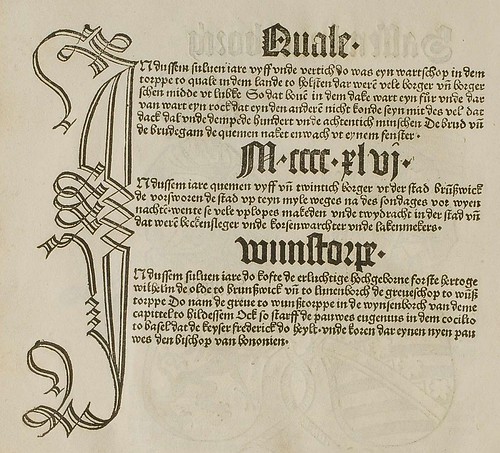

In 1492, a year before Hartman Schedel's famous 'Nuremburg Chronicle', the first and perhaps rarest of the great 'world' histories was published in Mainz.
Written in middle German by the goldsmith Conrad Bote (Konrad Botho), with copious woodcut illustrations by unknown artists (referred to as Masters H and HR), 'Cronecken der Sassen' (The Chronicles of Saxony) was the last work by the printer, Peter Schöffer, who had originally learned his craft under Johannes Gutenberg.
'World' means that the book commences with the creation of the world - there is an illustration of Noah's Ark in there - but settles down to be a regionally focused history, with pictures of all the major cities and armorial bearings and portraits of ruling families strewn throughout the work. In the manner of the time, many of the woodblock images (and bold calligraphic letters) appear repeatedly, functioning in a symbolic or representative manner.
I've certainly seen some of the images before, no doubt copied in later works, but I'm not sure if I've seen any similar figures in earlier handwritten manuscripts. There is very little online (in any language really) that provides more than just a cursory overview of the work.
- I posted nineteen full page images (not touched up in any way) to Wikimedia - most of these are seen above.
- 'Cronecken der Sassen' was uploaded to the internet yesterday by Wolfenbütteler Digitale Bibliothek. It consists of about six hundred+ pages and I would say I've posted the most interesting illustrations above or to Wikimedia.
- The last image above was nabbed from a German Ebay auction site.
- There
is no spoonare no links.



















4 comments :
The "Meydeborch" bit refers to the fact that Emperor Otto I gave the city of Magdeburg (incidentally, my hometown) to his wife Edith (or Eadgyth) as a gift "to live in". It goes on to an abbey, manned by the benedctine order.
The language is indeed Middle German, but Middle Low German, not the Middle High German that most of the German literary works from the period are written in.
Not sure about the date tho, as it is some low 900-number, but considering her birth is fixed mostly at 910 AD, it seems at odds with that.
I knew Peter Schöffer had something to do with the Gutenberg print shop, having researched Gutenberg for a blog entry previously, but I still had to look up the details. My best guess is that Schöffer continued to make money for Father-in-Law Johann Fust, who put up most of the money to establish the business, but presumably didn't get much back as long as Gutenberg was in charge.
Who pray tell are the naked females carted about by geese? (I'm not anxious to try dealing with Middle Low German text.)
The chariot of Venus symbolises the impatient surge of love - seen in Petrarch, Dante, Shakespeare and doubtless elsewhere. It's a kind of alchemy/tarot/mythology trope and I note there's a bit of chatter about the symbolism in whether it's geese or doves in various depictions. Use your academic powers of enquiry and you can avoid the middle low German.
Post a Comment
Comments are all moderated so don't waste your time spamming: they will never show up.
If you include ANY links that aren't pertinent to the blog post or discussion they will be deleted and a rash will break out in your underwear.
Also: please play the ball and not the person.
Note: only a member of this blog may post a comment.